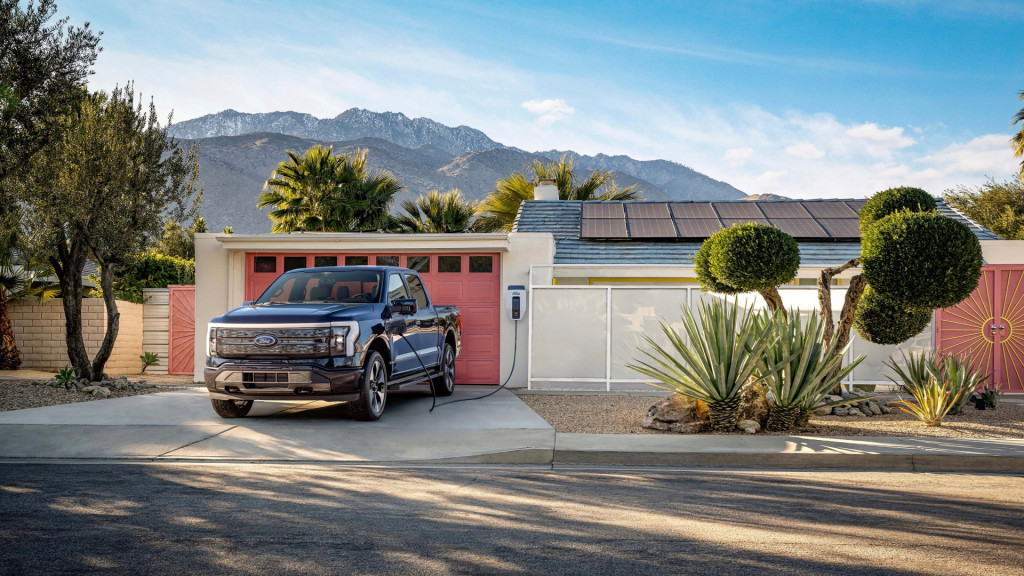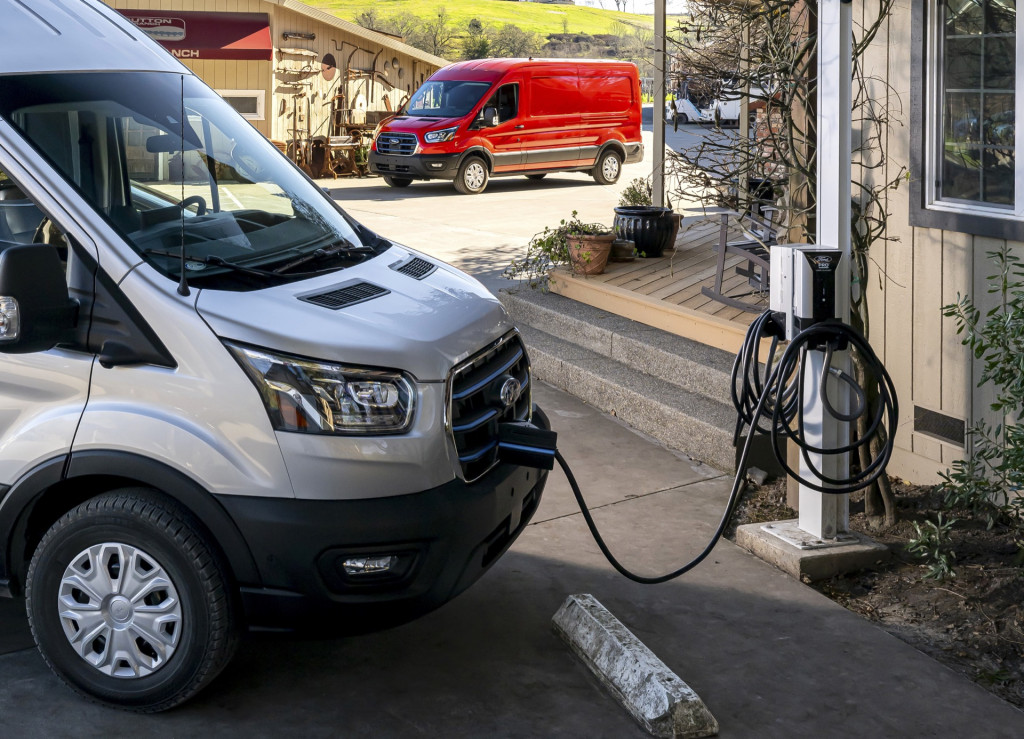Ford has filed a patent application with the United States Patent and Trademark Office (USPTO) for a dual-charge-port solution that would allow multiple EVs to charge in series from the same charging station.
First spotted by CarBuzz, the system described in the patent application makes use of bidirectional charging capability. But instead of either charging or discharging through a single charge port, this solution allows vehicles to do both, taking in power through one charge port and sending it to another vehicle through a second port.
In the patent application, Ford said this could be done with AC power sources, including home charging stations and wall outlets, or DC fast-charging stations. And it's not necessarily limited to charging vehicles.

2022 Ford F-150 Lightning Intelligent Backup Power
Ford also suggests use in vehicle-to-grid (V2G) applications, potentially allowing a series of vehicles to take energy from the grid, give it back to the grid, or share charge between vehicles, depending on software.
While patent filings are by no means proof of production intentions, this does seem like it could be a great complement to the Home Integration System that's offered today in the Ford F-150 Lightning, allowing the pickup truck to serve as an emergency home power backup source.
Beyond keeping the lights on during power outages, this tech could also be applied to the various V2G scenarios discussed by automakers and electric utilities, such as buffering the grid by using groups of EVs to absorb excess power for later use.

2022 Ford E-Transit
Or perhaps it could be part of optimizing charge profiles between EVs that are supported with Ford's Pro business. Helping businesses charge fleets of EVs in a way that minimizes electricity costs is an important part of Ford's plan to sell more work-oriented EVs.
This also appears similar to a patent last year from General Motors, which also discussed using dual charge ports to increase flexibility. Given the mutual goalpost of smarter, cost-effective charging, it wouldn't be surprising if multiple fleet-minded automakers are seeing something very close to the same solution.












